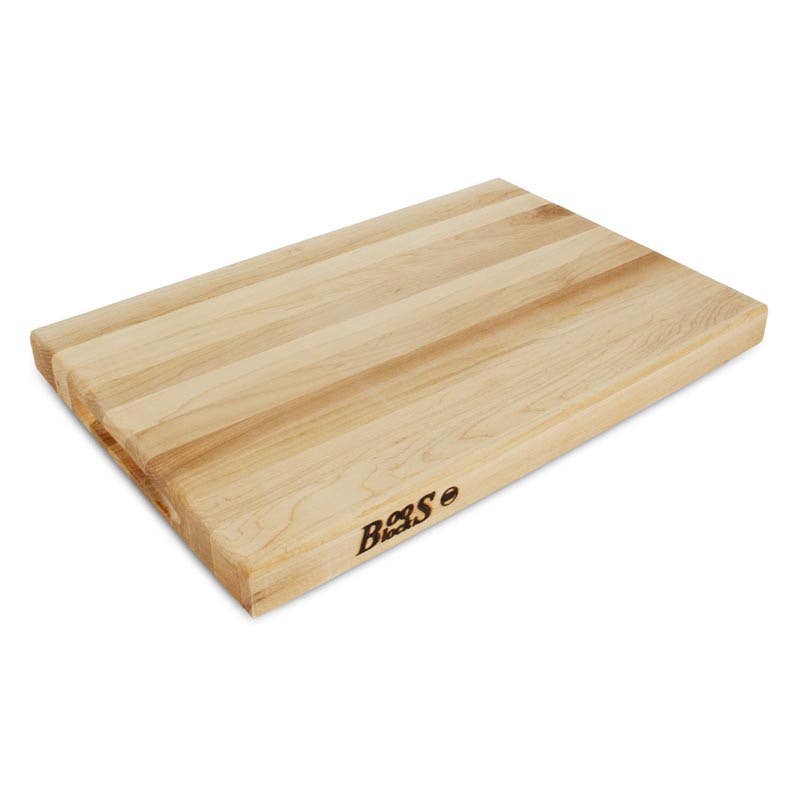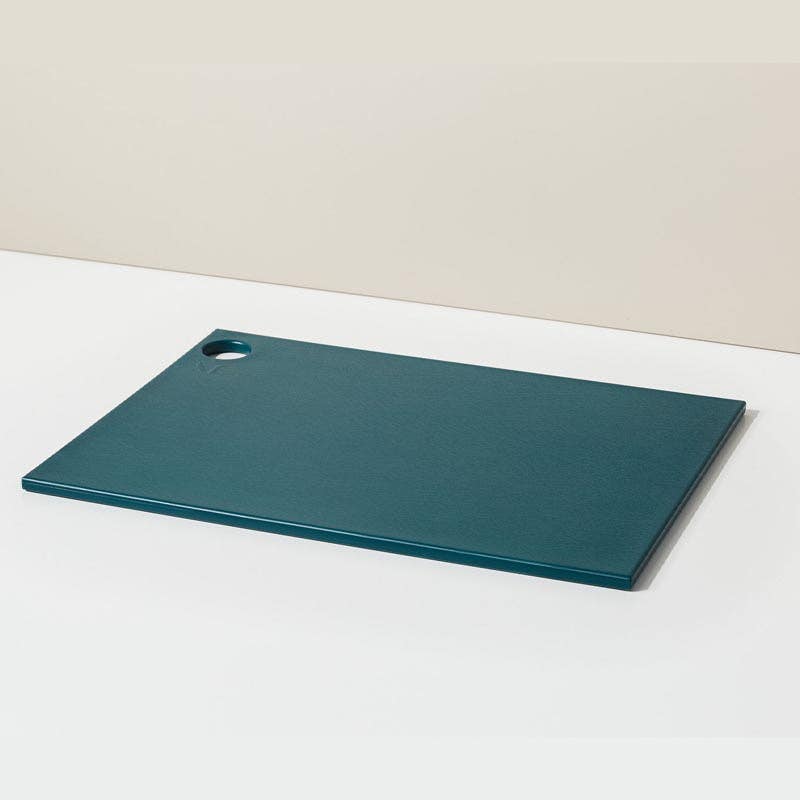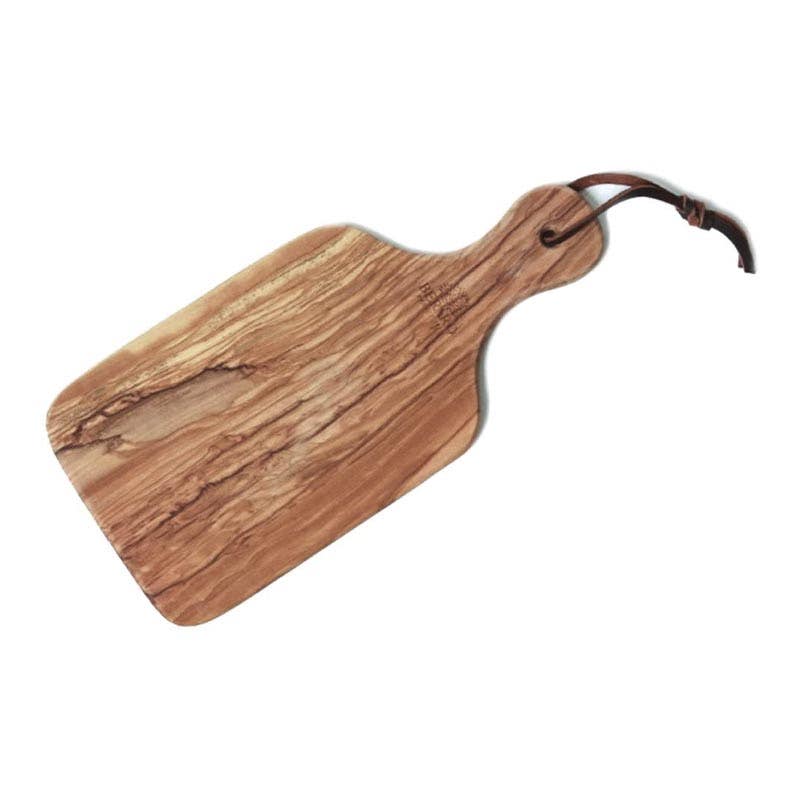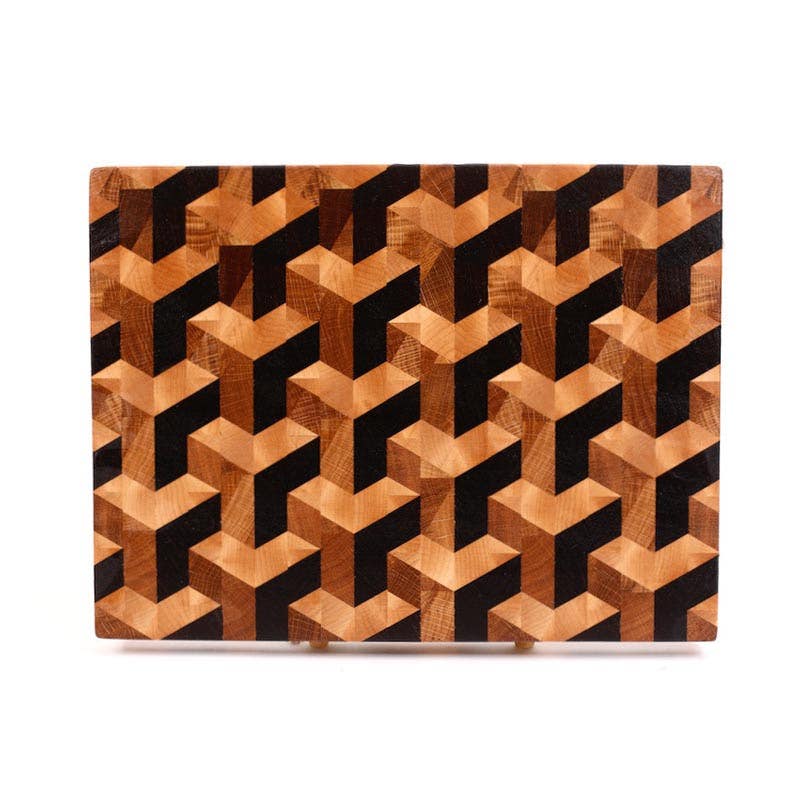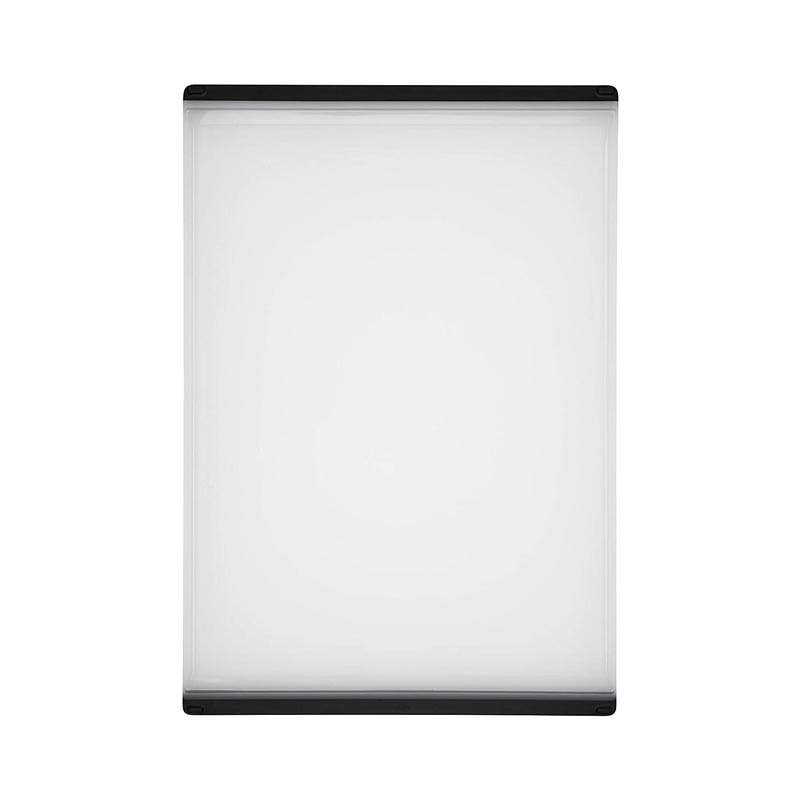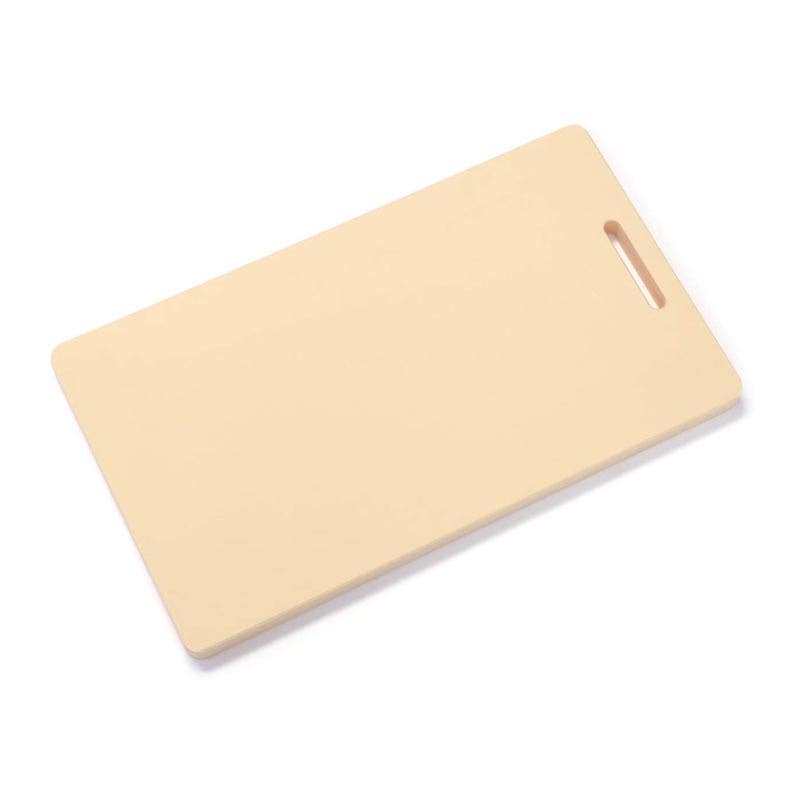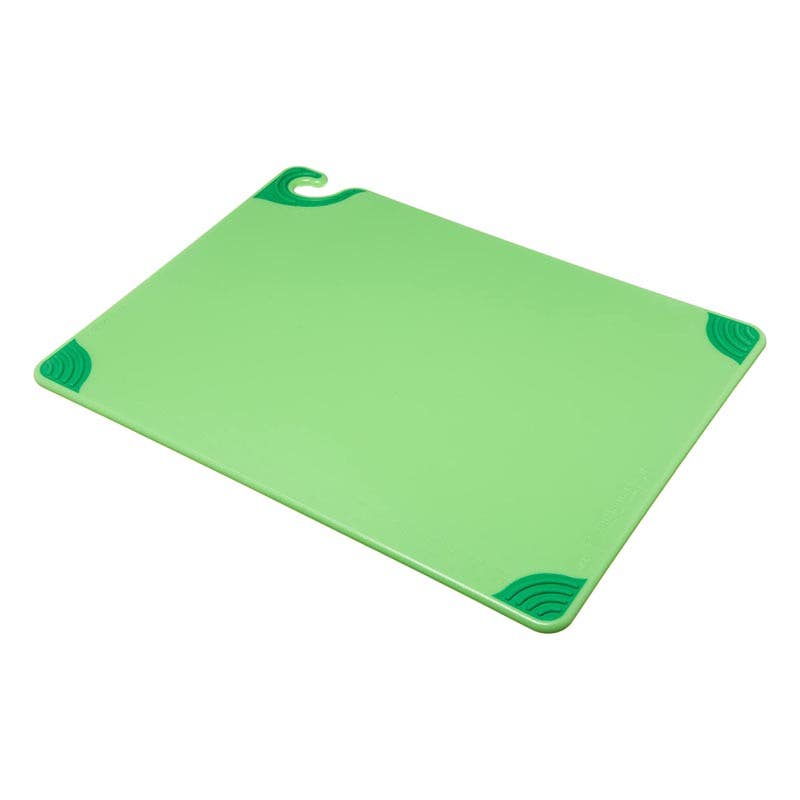High-Design Meets High-Function with the 7 Best Cutting Boards
Paring, slicing, and dicing made easy.
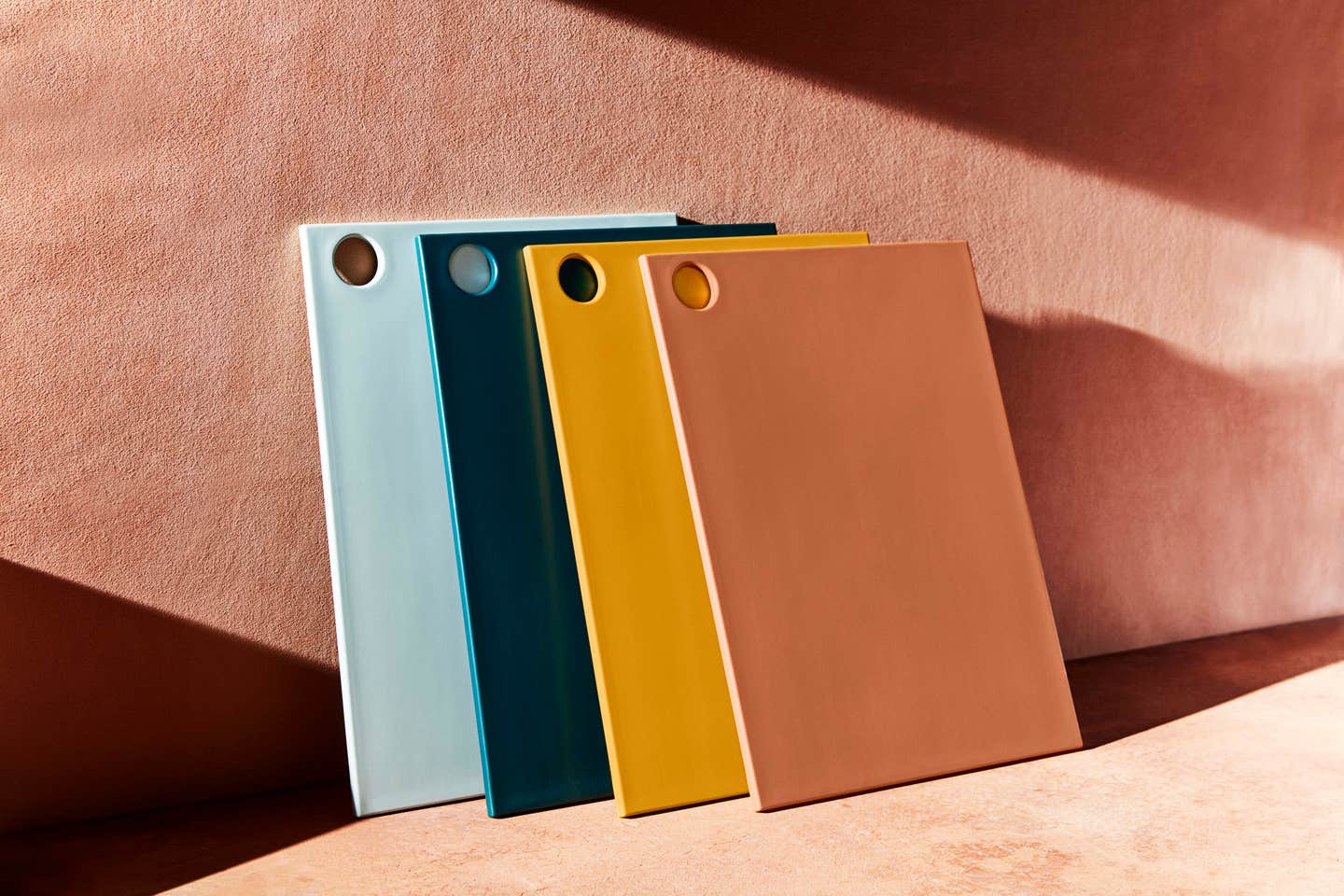
It’s impossible to overstate the importance of a good cutting board—like a serrated blade or cast-iron skillet, it’s the kind of kitchen staple that just can’t be compromised. Too flimsy and you wind up with a mess; too slippery and you run the risk of injury. But with so many available on the market, it can be hard to know which one to choose. Is plastic more sanitary than wood? Which materials dull your knives? Are any dishwasher-safe? And while end grain wood has been the go-to standard for years, there are also some new sustainable (and ultra-chic) models available that hold up well and won’t ruin your blades. To narrow down the options, we asked professional chefs, knife makers, and culinary experts for their recommendations. Luckily, their picks are definitely well above board.
Our Top Picks
- Best Overall: John Boos Block Maple Wood Cutting Board
- Best Value: Material The ReBoard
- Best for Small Prep: Berard Olive Wood Cutting Board
- Best Designs: MTM Wood Cutting Board
- Best for Messy Foods: OXO Good Grips Carving and Cutting Board
- Best for Seafood: Yoshihiro Hi-soft Cutting Board
- Best Multi-Purpose: San Jamar Cutting Board
Best Overall: John Boos Block Maple Wood Cutting Board
Best Overall
John Boos Blocks have been around for over 130 years and are beloved by chefs and kitchen gear experts alike. Made in the USA, this John Boos reversible board comes in three size options and three different types of wood: cherry, walnut, and maple. “Durable and safe, Boos wooden boards are always my go-to at home,” says Nicole Gajadhar, Chef de Cuisine at The Loyal in New York City. “They are very gentle on my knives and tools. Besides the durability, they also look beautiful and add character to a space,” she adds.
Ellen Bennett agrees: “These are the OGs. They look great and come in large sizes, which make for a great surface to work off of.” Plus, they can double as a serving board: “Add some jams, cheese, or butter right on there and it looks amazing.”
We recommend the 20 x 15 x 1.5-inch maple option with juice groove. For longevity, consider purchasing the board oil and board cream to seal the wood’s surface and prevent drying and cracking. (Use every three to four weeks.)
Best Value: Material Kitchen The reBoard
Best Value
The reBoard from Material Kitchen is not your average cutting board: Not only is it affordable and dishwasher-safe, it’s also refreshingly stylish and sustainably-made. Constructed from knife-friendly recycled plastics and renewable sugarcane, it’s BPA-free and uses zero new plastic. Plus, it’s offered in a variety of modern colors, with profits from two of the color options going to charities. At $35, there’s no excuse not to get more than one.
Best for Small Prep: Bérard Olive-Wood Handcrafted Cutting Board
Best for Small Prep
Whether for use on a tiny countertop or for preparing garnishes, this handcrafted, solid olive wood board wins. Designed in France and culled from sustainably managed forests in Tunisia, the Bérard cutting board measures 10 x 4 2/3-inches. Kat Craddock, Editorial Director of Recipes at SAVEUR, raves about the one she picked up from an outdoor market in Nice: “For tasks like cutting fruit for cocktails and small vegetables for salads, I keep a little olive wood board out on my countertop. It's prettier than plastic, gentle on my knives, and longer-lasting than other woods. It also doubles as a little serving platter for cheese and charcuterie.” And the built-in handle and hang strap make it easy to store, too.
Best Designs: MTM Wood Cutting Board
Best Designs
With inlaid-wood patterns and customizable options, Russian-based MTM Wood’s intricately-designed boards could easily double as works of art. Finished in protective beeswax and mineral oil, they come in a variety of durable, environmentally-friendly wood species (including oak, maple, and birch) and range in price from $26-300+. “MTM Wood does really precise and unique optical illusion designs in end grain woods,” explains Isaiah Schroeder. The shipping may set you back an extra $28, but with chess board patterns, Samurai sunset designs, and gorgeous 3D effects, they’re worth the splurge.
Best for Messy Foods: OXO Good Grips Carving and Cutting Board
Best for Messy Foods
For raw meat and drippy, messy ingredients, Craddock recommends these white plastic boards from OXO. “They are lightweight, easy to clean, come in a bunch of sizes, and they don't warp in the dishwasher. I really appreciate the slide-resistant silicone edges when I'm milling through fresh herbs, and the drip-catcher is a major plus when carving roasts or slicing up juicy stone fruit for pies,” she says. “I've had my OXO for five years and it's as good as new.” Featuring a double-sided, non-porous surface with easy-pour corners, it’s also a decent bargain at under $30.
Best for Seafood: Yoshihiro Hi-soft Cutting Board
Best for Seafood
You may have mastered the art of the nigiri slice, but have you tried it on a soft Japanese cutting board? When it comes to seafood, these Yoshihiro boards are a must. Odor resistant and made in Japan from soft polyvinyl acetate that resists warping, these hi-soft cutting boards absorb the impact of your knife to make slicing through fillets much easier. “I love soft Japanese cutting boards for fish. Their density is fantastic for taking care of seafood,” says Chef Diego Muñoz, partner chef at Popular at Public Hote in New York City. This model comes in a range of sizes and is fit for both at-home use and professional kitchens.
Best Multi-Purpose Use: San Jamar Cutting Board
Best Multi-Purpose Use
San Jamar’s anti-slip grip corners make everything from chopping hard vegetables to slicing through fish, fruits, and meats a breeze. They come in a variety of colors so you can designate different boards for specific types of food to prevent cross-contamination. The boards can also withstand high temperatures without warping. Embossed rulers on the edge help determine portions and a hook allows for easy storage. Chef Nicole Gajadhar is a fan: “San Jamar’s plastic cutting boards are dishwasher safe and heavy duty; a good board for multi-purpose use.”
Features to Keep in Mind
Material
It’s best to stick with either wood, plastic, or rubber. “Glass, bamboo, stone, and epicurean cutting boards are all very hard on your knife’s edge and will dull it quickly,” says Isaiah Schroeder of Schroeder Knife Works. “I don't recommend any of them.”
Opt for an end grain cutting board (made from either maple, walnut, or cherry) or a polymer material such as rubber or plastic. Although wood is a bit harder to clean and requires more maintenance, it’s not necessarily true that polymers are more sanitary: “End grain wood is both easier on the edge of your knife and more hygienic than almost any other option,” says Schroeder, who notes that the surface of plastic boards are susceptible to small cuts that can harbor bacteria. End grain wood, on the other hand, naturally self heals. “Bacteria will get pulled down below the surface and perish where it won't transfer to anything else you put on the board.”
Size
Sizes typically range from 12-20 inches. While bigger is usually better, make sure it fits comfortably on your countertop. The size should allow ample space for the amount of food you’re prepping, otherwise “everything would fall off the sides,” says Ellen Bennett of Hedley & Bennett. “It is best to use a proper sized cutting board for anything you do.”
As for thickness, Isaiah Schroeder recommends at least 1.5 inches for an end grain board to avoid warping as you use and wash it over time.
Grooved vs. Flat
The beauty of a grooved board is that it catches and prevents drippy liquids from spilling onto your countertop, especially when slicing up meats and fruits. “I use a double-sided end grain board that has a juice groove on one side and is flat on the other. The juice groove is great for slicing juicy meats and it also works as a crumb catcher when slicing bread,” says Schroeder.
Ask the Experts
How often should you replace a cutting board?
It depends on the material. Depending on how you take care of them, quality wood boards can last anywhere from five to 10 years. Plastic models should be swapped out every one to three years. Regardless of the material, any board that begins to warp or crack should be replaced.
What’s the best way to clean or sanitize a wooden board?
Wood cutting boards are generally not dishwasher-safe, so it’s best to clean them by hand. “As with all wooden kitchen tools, never leave them soaking in the sink. Hot water, soap, and a plastic scrubbie will suffice,” says Craddock.
“When I wash my board, I always get both sides of it wet and let it dry with air on both sides, which really helps keep it flat,” says Schroeder. “Every few months or so it's a good idea to apply some cutting board oil or wax to a wood board to keep it from drying out too much.” He recommends the Handle and Board wax from Chef Knives to Go.
What are clever ways to store cutting boards?
Think of your culinary tools as décor and hang boards from the wall using a simple coat hook. To add a sense of warmth to your kitchen, simply lean them against the wall in layers for easy access. Or, build vertical dividers in a pull-out drawer or cabinet to stow them out of sight.
Keep Reading
Continue to Next Story
